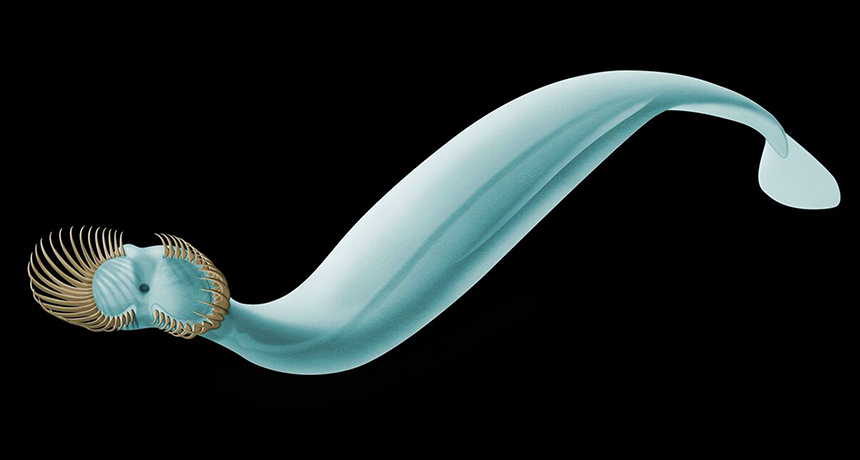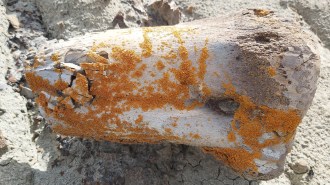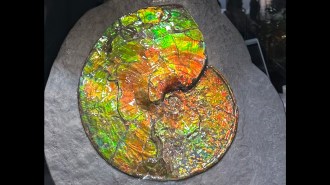This ancient sea worm sported a crowd of ‘claws’ around its mouth
Newly discovered animal had about double the number of spikes as its modern counterparts

SPINY SWIMMER An ancient arrow worm (illustrated) had about 50 spines protruding from its face to help it capture prey.
Marianne Collins, © Royal Ontario Museum








